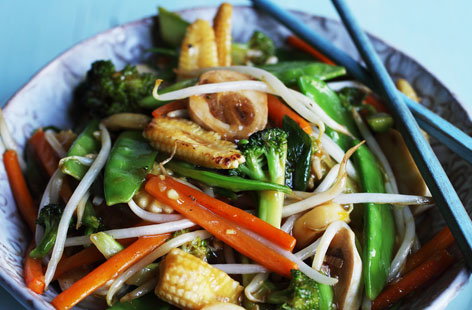
Therefore, here are some quick and easy recipes and ideas to help you fuel right quickly with minimum resources.
Breakfast #1 - Quick Oatmeal
0.5 cup oatmeal
1 cup water or 1 cup 1% milk
1 Tbsp honey
0.5 cup raspberries (or any fruit)
1 Tbsp chia seeds
1 oz pumpkin seeds
Heat oatmeal and water in microwave for 2 minutes (or until you like the consistency). Add all other ingredients and enjoy. Here are some other oatmeal combinations.
Breakfast #2 - Scrambled Eggs
1-2 eggs (or egg substitute)
2 Tbsp shredded cheese
1 Tbsp cilantro or parsley
Pinch salt and pepper
Whip eggs in a microwave safe bowel or mug. Add cheese and herbs. Microwave for 1.5-2 minutes. Season and enjoy. You can also make it a breakfast burrito by putting it in a tortilla.
Breakfast #3 - Granola with yogurt and fruit
0.5 cup granola
 6 oz low fat yogurt vanilla or plain
6 oz low fat yogurt vanilla or plain0.5 cup strawberries
0.5 cup blueberries
No need for a microwave here! Mix all ingredients together and enjoy
Lunch/Dinner #1 - Sweet Potato, Green Beans and Salmon
1 Salmon filet
1.5 tsp olive oil
0.5 tsp garlic powder
1 tsp dried rosemary
1 tsp dried chives
2 slices lemon
Pinch of sea salt
Pinch of pepper
Put salmon in a microwave safe plate (skin face down). Spread oil on fish. Season with all herbs and spices. Top with lemon. Heat for 3-4 minutes or until ready (every microwave will be different).
+ Wash sweet potato and put in microwave for 5 minutes or until soft.
+ Heat green beans in microwave for 3-4 minutes or until ready.
Enjoy this great colorful meal!
Lunch/Dinner #2 - Chicken Parmesan
Here is a great recipe for microwave Chicken Parmesan
Just add some vegetable mix and you are good to go!
Lunch/Dinner #3 - Vegetarian Chili
Since I found a great recipe online, I decided to share
Lunch/Dinner #4 - Chicken Salad
1 chicken breast cut to small cubes
 1 tsp olive oil
1 tsp olive oil0.5 tsp paprika
0.5 tsp cumin
2 cups spinach
1 medium tomato diced
0.5 cup carrots diced
0.5 red pepper diced
1 small cucumber cut into rounds
1 cup croutons
1 oz shaved almonds
Season per liking
In a microwave safe bowel mix chicken, olive oil, paprika and cumin. Add salt and pepper if you desire. Heat in microwave for 3.5-5 minutes or until chicken is ready. Set chicken aside to cool down. In the mean time mix all other salad ingredients in a bowel stir and add dressing to your liking (in moderation). Add chicken to mixed salad. You can also use canned chicken which will be even quicker.
For more creative and cool ideas for microwave meals feel free to check this out. Potatoes, vegetables and couscous are also very easy to make in the microwave and do not require any recipe.
Cooking should not be a burden because it can be fast and easy. No excuses! Whether you are at the dorm or off campus you should be able to make these recipes. Go eat to compete!









